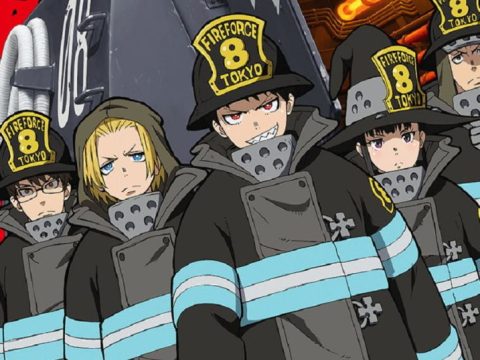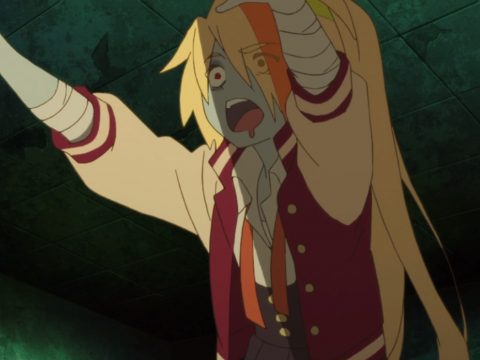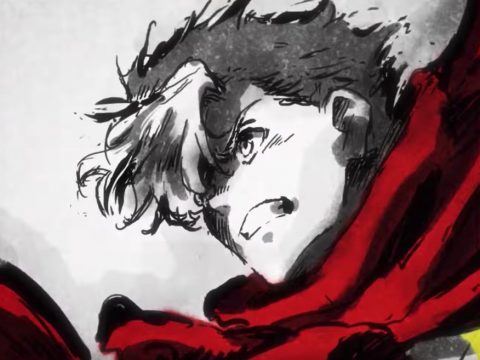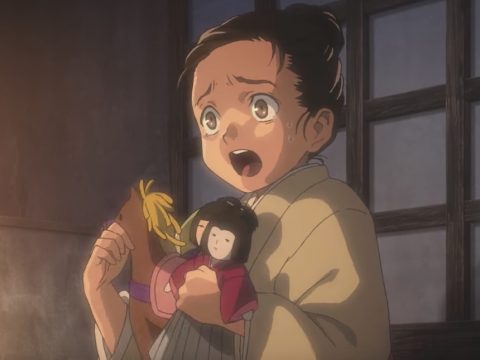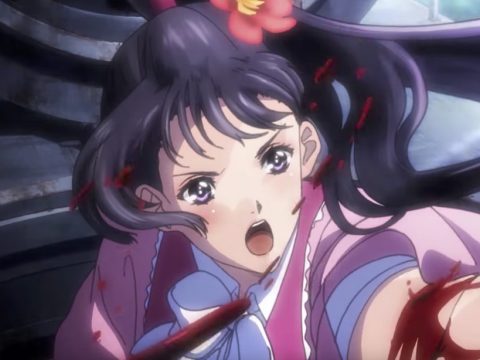At times thrilling, at times horrific, at times melancholy, Kabaneri of the Iron Fortress is a story of survival in the face of incredible hardship.
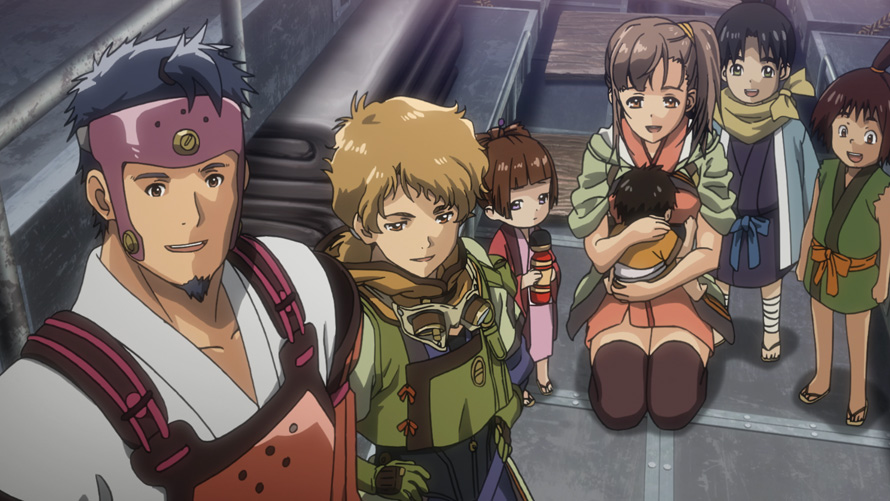
Individually, zombies and the steampunk aesthetic may be the source of much mockery on social media, but combined together the two are like chocolate and peanut butter in Kabaneri of the Iron Fortress, a 2016 TV anime with direction by Tetsuro Araki and animation by Wit Studio. Boasting an impressive array of artistic talent and a lady-engineer character with a pair of deltoids that burned my Twitter feed to the ground, the series has been affectionately nicknamed “Attack on Train” by some of its more vocal fans, probably because the original Japanese title, Koutetsujou no Kabaneri, is a bit of a tongue-twister.
In a world and in a time line very different from our own, the land of Hinomoto has been over-run by hordes of cannibal zombies known as “Kabane.” The few surviving pockets of humanity have retreated into heavily fortified stations connected by a web of armored trains. Ikoma is a hot-blooded young man who lives in one such station. He works by day as a steam-smith, and in his free time invents new weapons to combat the Kabane. Disaster strikes when a Kabane-infested train crashes into the station one night, breaching the outer walls and exposing the entire town to an onslaught of ravening zombies. Ikoma seizes the opportunity to test out a steam-powered bolt gun capable of piercing the iron cages that protect the hearts of the Kabane, but in the ensuing melee he is bitten, and bites from the Kabane transmit a fatal infection that swiftly transforms human victims into the walking dead. Quick-witted, resourceful, and determined to live, Ikoma manages to prevent the infection from reaching his brain. As an unexpected side effect, he becomes something not quite Kabane, but not quite human either. Ikoma is a “Kabaneri,” a being that possesses the superhuman strength and resilience of the Kabane, but also his original human memories and mental faculties … as well as a new-found hunger for human blood.
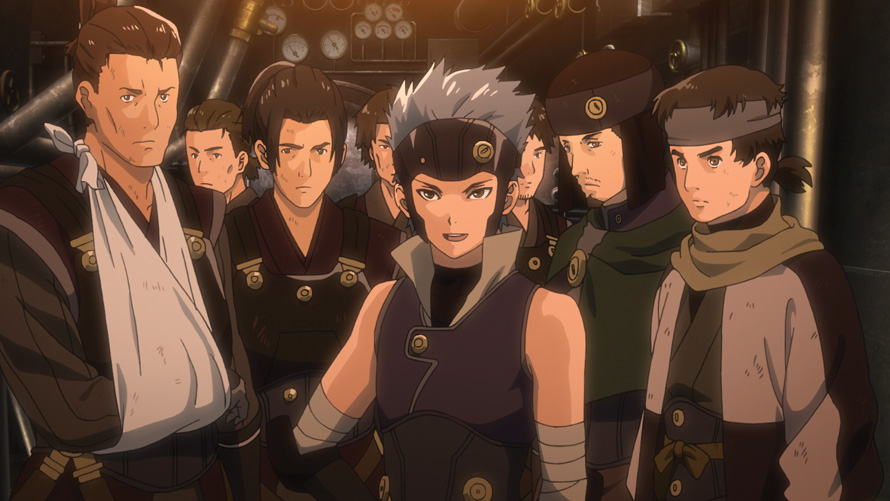
Kabaneri of the Iron Fortress is a gorgeous work of animation with high production values that remain excellent throughout. Tetsuro Araki’s approach to character drama may be about as subtle as throwing a brick through a plate glass window, but he knows how to direct action sequences, especially action sequences involving massive objects moving at high speeds. Whether it’s locomotives barreling through legions of flailing Kabane, a cavalry charge of steam-powered motorcycles, or characters locked in hand-to-hand combat, the action scenes in Kabaneri of the Iron Fortress have the weight and impact required to keep an audience enraptured. Haruhiko Mikimoto, best known for his classic work on Super Dimension Fortress Macross and Megazone 23, provides the character designs. Art director Shunichiro Yoshihara, director of photography Kazuhiro Yamada, and background artists Shuichi Tsuji and Yumiko Kirimoto also all deserve special recognition for their superb work in bringing Kabaneri to life. The show looks amazing in high definition.
The other superlative aspect of Kabaneri of the Iron Fortress is the realization of its setting. The world of Hinomoto is meticulously detailed, from the engineering of the railway systems to the lived-in architectural sprawl of the stations all the way down to the clothing the people wear, the food they eat, and the tools they use in their everyday lives. This sense of world-building also extends to more intangible details such as politics and culture. Kabaneri depicts a rigid caste system with the “bushi” (a samurai class) protecting the interests of the noble families who control the trains and the stations. Meanwhile, the common people just try to make it through their days without getting bitten or shot. The need to prevent infection from spreading results in inspection procedures that take on a ritualistic quality, and entire communities bond around the Tanabata festival. Even the Kabane demonstrate some degree of culture. Unlike typical mindless zombies, the Kabane embody a pack mentality and show signs of higher level consciousness. For example, they express shrieking distress when their fellow Kabane are slain. Specific Kabane also demonstrate problem-solving skills such as the ability to learn martial arts or sword-fighting styles.
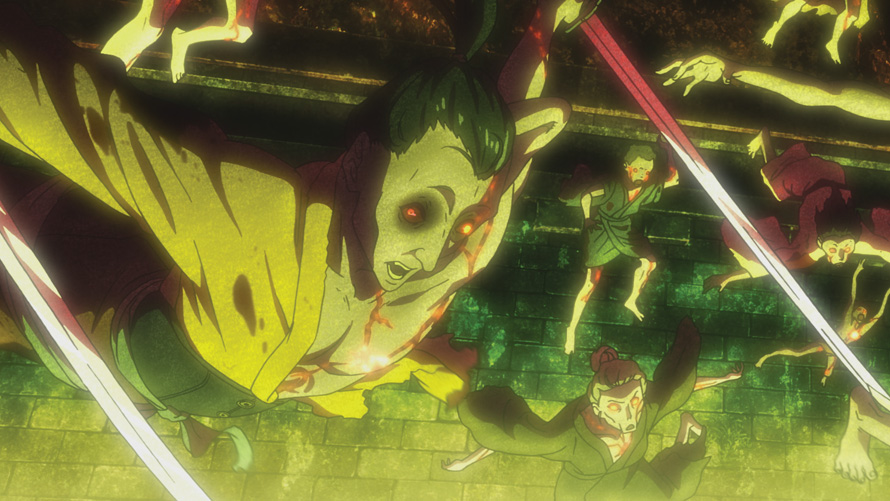
Kabaneri of the Iron Fortress slips the tracks a bit in the narrative department. With only 12 episodes to establish such a detailed setting with such a high-concept premise, the series has to rush along at a breakneck pace, and the spitfire manner in which important plot points and character beats are delivered undermines emotional investment. It’s difficult to feel more than a twinge of pathos for people that are introduced only to die immediately, and there simply isn’t enough time and screen space to delve deeply into the internal conflicts of many of the characters. This is especially true of Biba, the principal antagonist of the show. Mentioned earlier in the series but only initially introduced in Episode 7, Biba is the spurned son of the Shogun who presents himself as a populist hero. In fact, Biba is not a liberator but rather a genocidal maniac bent on destroying the society that sent him on a suicide mission a decade ago. His appearance causes the plot of Kabaneri to change course so rapidly that it’s jarring, and his quest for revenge almost derails the narrative completely.
At times thrilling, at times horrific, at times melancholy, Kabaneri is a story of survival in the face of incredible hardship, of perseverance in the face of unspeakable adversity, and of forging the bonds of family and community in a chaotic, hostile world. The show is a worthy addition to the collection of any fan who enjoys apocalyptic speculative fiction in which the worst impulses are not found in the hearts of the steampunk zombies, but rather in the dark and ruthless hearts of human beings.
<strongKabaneri of the Iron Fortress is available from Crunchyroll and Funimation.
This story appears in the April 2018 issue of Otaku USA Magazine. Click here to get a print copy.


